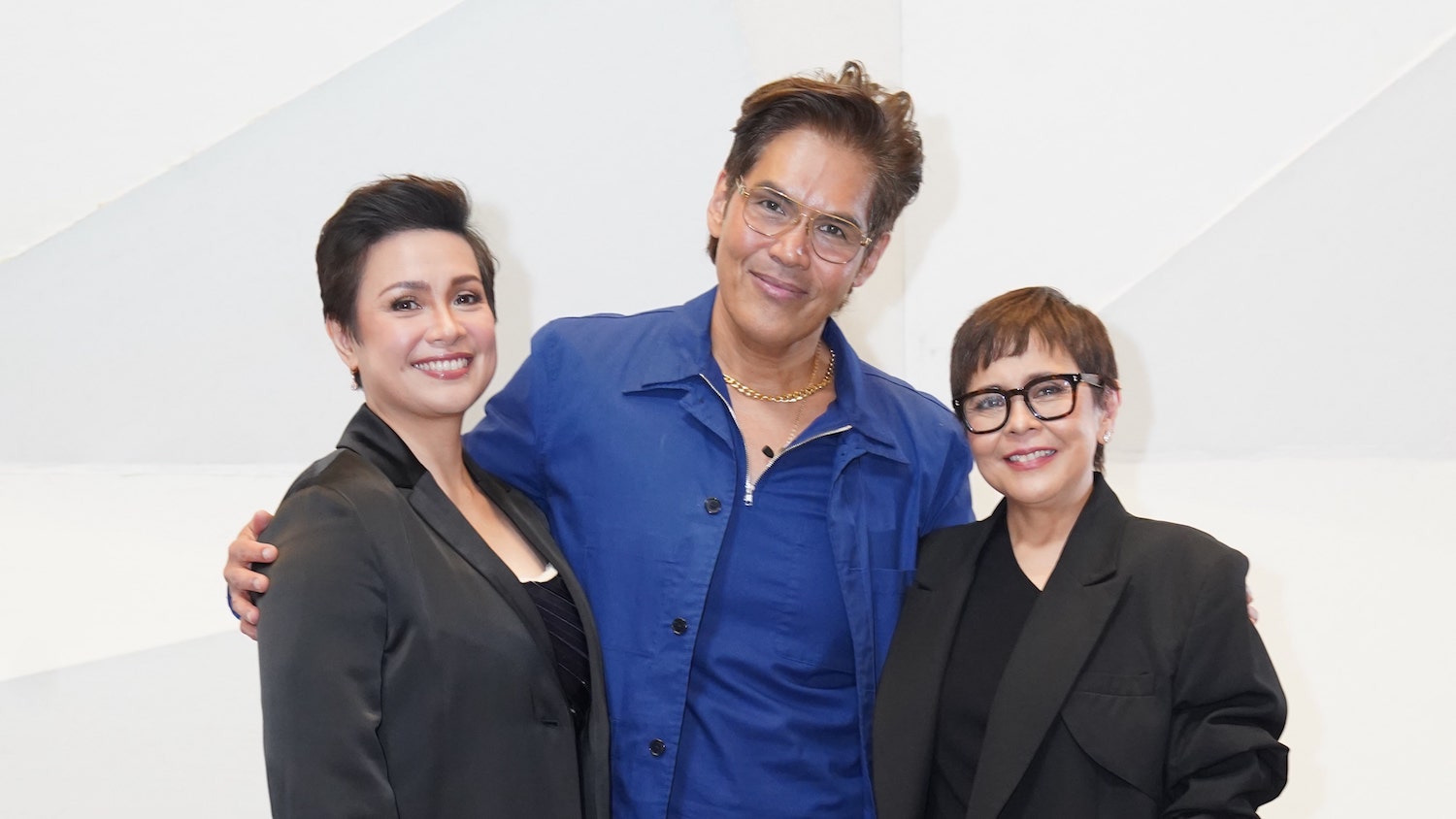
Clint Ramos: Scenic and Costume Designer Returns Home with ‘Request sa Radyo’
The Tony Award-winner serves as producer and creative director for the upcoming play ‘Request Sa Radyo’ starring Lea Salonga and Dolly De Leon.
Filipino scenic and costume designer Clint Ramos, a Tony Award-winner (Best Costume Design of a Play for Eclipsed) and six-time Tony Award nominee, serves as producer and creative director for the upcoming play Request sa Radyo. The play stars Lea Salonga and Dolly de Leon, who alternate in this one-woman show. He has designed sets and costumes for over 200 theater, opera, and dance productions worldwide.
Ramos’s journey began with studying Theater Arts at UP and participating in Dulaang UP. He then earned an MFA in Design for Stage and Film from New York University’s Tisch School of the Arts. Having spent most of his professional life on New York stages, he now returns home to create and aims to do so consistently.
Request sa Radyo is co-produced by Ramos, Bobby Garcia, Christopher Mohnani for Ayala Land and GMG Productions, with Garcia also serving as the play’s director. Ramos explains, “Request sa Radyo is based on the Austrian play Wunschkonzert [by Franz Xaver Kroetz]. Translated to English, it’s Request Program, and it’s about a working-class woman, a snippet of her life, as she listens to a request concert. It’s an exploration of loneliness and what a life without connection does to a human being.’”
He adds that he’s seen the play four times in different parts of the world and has been moved each time. “It’s the same story but it’s different each time. The set is different, the woman is different, the life is different.”
Ramos describes the play as a hybrid of performance art and theater that’s grounded in reality. “It is a wordless play but it doesn’t mean it’s incomplete. What we’re creating is an experiential experience, a theatrical immersive experience of a show.”
FILIPINO MILIEU
Ramos and Garcia have adapted the play to the Filipino milieu, featuring a Filipina caregiver working abroad. The audience follows her journey from returning home from work to her studio apartment and going to bed. “There’s a trajectory to it. She deals with her own loneliness in her own life,” Ramos elaborates.
He continues, “I know a lot of Filipinos who work in Europe and the idea that Filipinos, particularly migrant Filipinos, are invisible, sheds light on this life. It just so happens that last year, the World Health Organization declared loneliness as the next epidemic. It just all collided. I’ve had conversations with Lea, Dolly, and with Bobby Garcia. We all got excited about what this could actually show.”
“When you look at migrant Filipino work as the number one export, and the way we look at our kababayans abroad and how they are treated invisibly, it made sense to us. The idea of premiering it in Manila also made sense because I think it’s a phenomenon that we seldom think about, and I think for me, at least with the way I was trained, theater is not only about entertainment but a venue for thought, a venue for reflection as a society.”
He adds, “I think what’s really exciting about it is it is about an exploration of human behavior. And when you think about acting, it’s really about the truthful conveyance of human behavior. And for me at least, there’s no one I think who can really do this other than the two actresses that we have who come to the form from different points of view, Lea and Dolly.”
LEA SALONGA AND DOLLY DE LEON
Regarding casting, Ramos recounts separate conversations with both actresses. “Dolly said, ‘I wanna go back to the stage after Triangle of Sadness.’ And Lea said, ‘I wanna do something different. Something that really pushes my muscles in a different way.’ And so when Bobby and I said, ‘Is it Lea or is it Dolly?’ We said, ‘Well, what about both.’” When they asked them their thoughts about alternating for the same character, they said, “That’s genius. We would love to do it.”
He describes their performances as a display of virtuosity. “When we pay so much attention, particularly now, to the Olympics and our athletes, I think Lea Salonga and Dolly de Leon are the Olympians of the theater.”
“It is an intimate portrait. You will be right there with them as they show you the journey of this character.” says Ramos. “They’re very distinct performances and we’re just excited to share it all with you.”
TRANSFORMING THE SAMSUNG PERFORMING ARTS THEATER
The Samsung Performing Arts Theater, normally a 1500-seater, will now only seat 400 for this production. On this, Clint says, “We’re transforming the Samsung Theater. We can’t tell you how because it’s going to be a surprise, but what it’s going to be is an intimate evening, and you’re going to be looking at the life of this particular woman.”
He adds, “I think there’s something great about making something big into something small. I think part of what we want Request sa Radyo to do is to push the limits of design and really invite people to view performance differently. Also, they’re gonna see the Samsung Theater in a different light. There’s so much that you don’t see that actually architecturally and also design-wise that makes the Samsung Theater state-of the-art.”
PAYING IT FORWARD
As a Cebu native, Ramos says he comes home to see family there every year. But what made him ultimately decide to return and do more work here?
Aside from wanting to be more present with his mom since his dad passed away, he shares that when he and Salonga were working on the Broadway revival of Once on this Island in 2017, they started to talk about what they plan to do next in this phase of their lives. “And I think this kind of fit into that, how we can create meaningful change using our privilege, because we are privileged. We’ve been honored and we want to pay it forward.”
“Clearly, she has her own schedule, I have my own schedule, so we try to make it work with our schedules. But we’re committed to this, and so is Bobby.”
Which is why when he was approached by Mohnani and the Ayalas, he said yes without hesitation.
“We started having this conversation about doing work here in the Philippines that’s different from the work that has been done and really looking at how we can gauge the global Filipino in the performing arts. So Request sa Radyo is just the beginning of what we’re looking at as a source of programming to be in residence at the Samsung Performing Arts Theater.”
WHAT’S NEXT
Ramos said that he, Garcia, and Mohnani are planning to do two shows a year at the theater as a start. “I think when the Ayalas really thought about the Samsung Performing Arts Theater, they were also thinking about Makati, and how, if it isn’t already, punctuate the idea that this could be the center for performance and arts.”
“We’re gonna announce the two shows that we’re doing pretty soon, maybe during Request sa Radyo. We’re doing theater shows, but we’re really curating it and selecting shows so that it crosses not only the visual arts like Request sa Radyo is doing, and performance art, but also dance, and music, and all that stuff.”
He also shares that a big part of their plan is to bring home talented Filipino artists of Filipino heritage to come back to the Philippines and do performances with the artists here. “Not only performers, but directors, choreographers, who are making waves both in the West End and on Broadway to come here and really do meaningful interactions.”
“Rather than just bringing in what you’d call ‘stars’, we want folks to really do meaningful interactions like masterclasses, observership. As a matter of fact, for Request sa Radyo, we’re inviting a bunch of theater designers who are still in school to observe the process. This is sort of a template of what we want to do for the future.”
He says that what he wants to do is to really work closely with designers here to share best practices. “We’re transforming that idea of mentorship, so it’s not a power dynamic based on ‘Here’s the master and here’s the apprentice,’ but really the sort of collaboration on how we can push Philippine theater design forward.”
“They’re so talented. They’re unbelievably skilled. But I also feel like there’s a lot to share with them, particularly with best practices.”


Comments